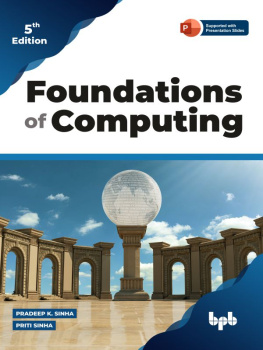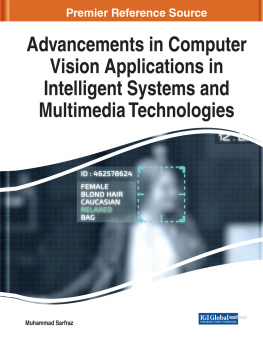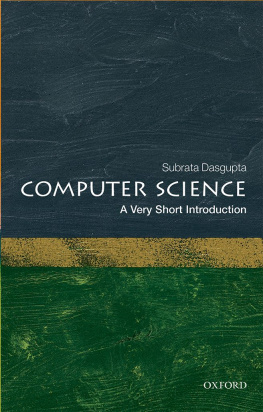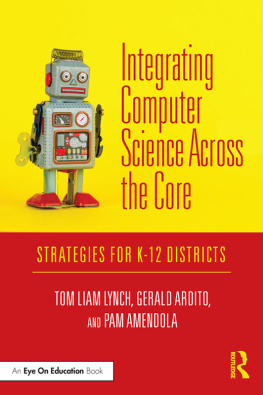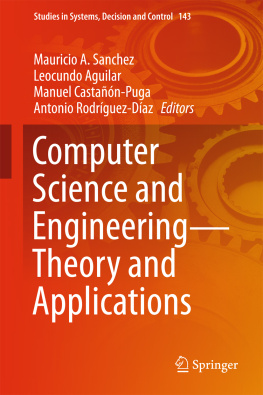Contents

Andrzej Yatsko, Walery Susow
Insight into Theoretical and Applied Informatics
Introduction to Information Technologies and Computer Science
Published by De Gruyter Open Ltd, Warsaw/Berlin
Part of Walter de Gruyter GmbH, Berlin/Munich/Boston

This work is licensed under the Creative Commons Attribution-NonCommercial-NoDerivs 3.0 license, which means that the text may be used for non-commercial purposes, provided credit is given to the author. For details go to http://creativecommons.org/licenses/by-nc-nd/3.0/.
Copyright 2015 Andrzej Yatsko, Walery Susow
ISBN 978-3-11-046987-5
e-ISBN 978-3-11-046988-2
Bibliographic information published by the Deutsche Nationalbibliothek.
The Deutsche Nationalbibliothek lists this publication in the Deutsche Nationalbibliografie; detailed bibliographic data are available in the Internet at http://dnb.dnb.de.
Managing Editor: Irmina Grzegorek
Associate Editor: Dalia Baziuke
Language Editor: Adam Tod Leverton
www.degruyteropen.com
Cover illustration: Andrzej Yatsko, Walery Susow, Micha Statkiewicz
Contents
Abstract
The book is addressed to young people interested in computer technologies and computer science. The objective of this book is to provide the reader with all the necessary elements to get him or her started in the modern field of informatics and to allow him or her to become aware of the relationship between key areas of computer science. The book is addressed not only to future software developers, but also to all who are interested in computing in a widely understood sense. The authors also expect that some computer professionals will want to review this book to lift themselves above the daily grind and to embrace the excellence of the whole field of computer science. Unlike existing books, this one bypasses issues concerning the construction of computers and focuses only on information processing. Recognizing the importance of the human factor in information processing, the authors intend to present the theoretical foundations of computer science, software development rules, and some business aspects of informatics in non-technocratic, humanistic terms.
1 Introduction to Informatics
1.1 Basics of Informatics
Informatics is a very young scientific discipline and academic field. The interpretation of the term (in the sense used in modern European scientific literature) has not yet been established and generally accepted . The homeland of most modern computers and computer technologies is located in the United States of America which is why American terminology in informatics is intertwined with that of Europe. The American term computer science is considered a synonym of the term informatics, but these two terms have a different history, somewhat different meanings, and are the roots of concept trees filled with different terminology. While a specialist in the field of computer science is called a computer engineer, a practitioner of informatics may be called an informatician.
The history of the term computer science begins in the year 1959, when Louis Fein advocated the creation of the first Graduate School of Computer Science which would be similar to Harvard Business School. In justifying the name of the school, he referred to management science, which like computer science has an applied and interdisciplinary nature, and has characteristics of an academic discipline. Despite its name (computer science), most of the scientific areas related to the computer do not include the study of computers themselves. As a result, several alternative names have been proposed in the English speaking world, e.g., some faculties of major universities prefer the term computing science to emphasize the difference between the terms. Peter Naur suggested the Scandinavian term datalogy , to reflect the fact that the scientific discipline operates and handles data, although not necessarily with the use of computers. Karl Steinbuch introduced in 1957 the German term informatik , Philippe Dreyfus introduced in 1962 the French term informatique . The English term informatics was coined as a combination of two words: information and automation ; originally, it described the science of automatic processing of information. The central notion of informatics was the transformation of information , which takes place through computation and communication by organisms and artifacts. Transformations of information enable its use for decision-making.
Q&A
What is informatics? | Technical definition: Informatics involves the practice of information systems engineering, and of information processing. It studies the structure, behavior, and interactions of natural and artificial systems that collect, generate, store, process, transmit and present information. Informatics combines aspects of software engineering, human-computer interaction, and the study of organizations and information technology; one can say it studies computers and people. In Europe, the same term informatics is often used for computer science (which studies computers and computer technologies).
Business definition: Informatics is a discipline that combines into one-field information technologies, computer science and business administration. |
A number of experts in the field of computer science have argued that in computer science there are three distinct paradigms. According to Peter Wegner, these three paradigms are science, technology and mathematics. According to Peter J. Denning, these are theory, modeling and design. Amnon H. Eden described these as rationalist, technocratic, and scientific paradigms. In his opinion, in frames of rationalist paradigm the computer science is a branch of mathematics; mathematics dominates in theoretical computer science and mainly uses the logical conclusion. The technocratic paradigm is the most important in software engineering. In the frame of a scientific paradigm, computer science is a branch of empirical science, but differs in that it carries out experiments on artificial objects software and hardware.

Figure 1: Foundations of computer science and informatics.
An overview of computer science can be borrowed from Charles Chen numerical and logical analyses, discrete mathematics, statistics, programming theory, software and hardware architecture. The practical branch contains operating systems, different apps, frameworks, and software engineering. Real world applications of computer science include cryptography, software development, project management, IT system support, artificial intelligence, and computer graphic.
The dominated meaning of the term informatics has changed in different periods of development of the science. At first, informatics was treated as a part of library science the theory of scientific information activity. This means practical work on the collection, analytical and synthetic processing, storage, retrieval and provision of scientific information laid down by scientists and engineers in their documents. Informatics was a discipline that studied the structure and general properties of scientific information, as well as the laws of its creation, transformation, transmission and use in various spheres of human activity. Later, it turned more in the direction of the science of computers and their applications and informatics came to mean a computing and programming discipline engaged in the development of the theory of programming and of application of computers . The last meaning of the term as fundamental science of information processes in nature, society and technical systems was coined in the early 1990s. According to this interpretation informatics examines the properties, laws, methods and means of formation, transformation and dissemination of information in nature and society, including by means of technical systems. The latter change caused that besides informatics specializations like theoretical computer science or technical informatics there are also social informatics, biological informatics, and physical informatics. Nowadays we can observe the coexistence of all three definitions of the word informatics. This fact complicates the study of this scientific direction.


